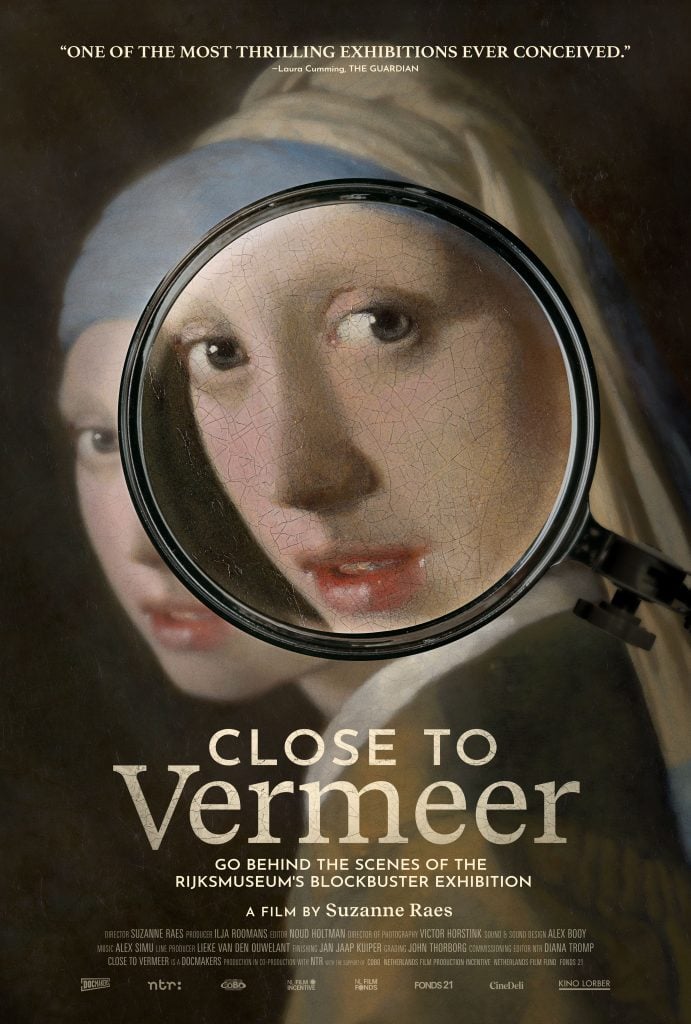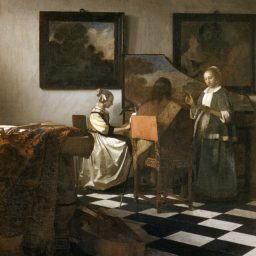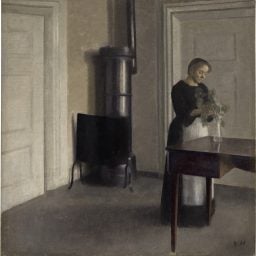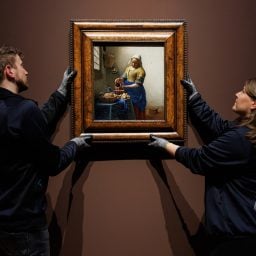Since the opening of the Rijksmuseum’s Johannes Vermeer exhibition, the Amsterdam museum has been overwhelmed by visitor demand for the once-in-a-lifetime blockbuster. The institution has had to stay open late to accommodate crowds of art lovers from all over the world eager to see 28 masterpieces by the Dutch Golden Age painter—the most ever shown in one place.
While the end result is undoubtedly a success, director Suzanne Raes’s new documentary from Kino Lorber, which premiered at New York’s Quad Cinema ahead of the final days of the exhibition, provides a fascinating behind-the-scenes glimpse of the drama that preceded the show’s historic run.
Close to Vermeer follows Gregor Weber, the Rijksmuseum’s head of fine and decorative arts, as he embarks on his last show before retirement, curating a career-defining exhibition with Pieter Roelofs, the museum’s head of paintings and sculpture.
The filmmakers are there every step of the way, from determining the optimal exhibition crowd control (a semicircular barrier that allows as many as 15 people to stand around each painting at one time), to traveling in person to museums across the U.S. and Europe to court important loans, to making a handful new discoveries about the artist, who remains something of a mystery despite his worldwide fame.
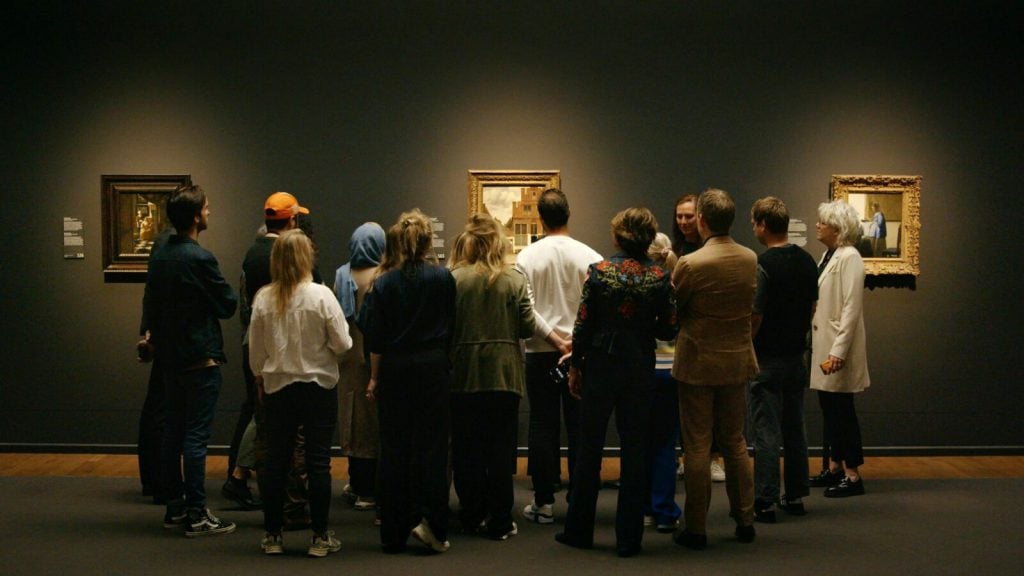
A still from Close to Vermeer. Photo courtesy of Kino Lorber.
Weber’s passion for the show’s subject is immediately apparent, as he recounts seeing his first works by the artist as a schoolboy visiting London. “The moment I saw the Vermeers, I actually fainted,” he said.
That Weber and Roelofs were able to make this exhibition—which sold out in mere days—happen in the first place is nothing short of remarkable. The show was only possible only due to the fact that the Frick Collection in New York, which has three Vermeers, is currently renovating its Fifth Avenue mansion—normally, loans are out of the question.
Reuniting the bulk of the artist’s oeuvre, in his native country was always going to be a moving experience. Vermeer is only known to have made 37 paintings, including The Concert, which has been missing since its 1990 theft from Boston’s Isabella Stewart Gardner Museum.
But the film packs surprising emotional heft when Weber and Roelofs are forced to come to terms with the absence of key works. At various points, the two stand over a desk, arranging and rearranging postcards of all the Vermeer paintings as they might best be displayed in the show.
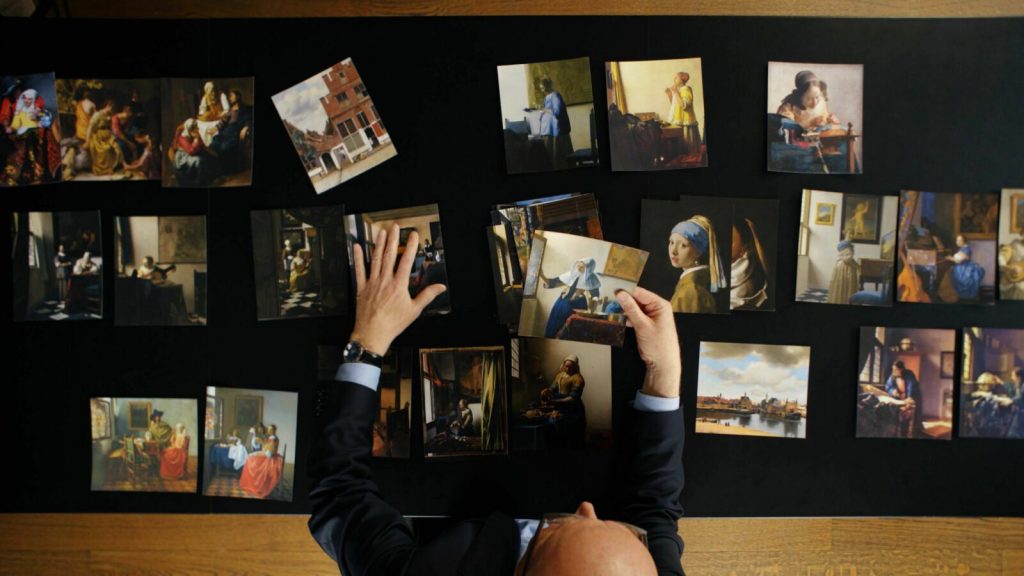
A still from Close to Vermeer. Photo courtesy of Kino Lorber.
The famed Girl With a Pearl Earring from the Mauritshuis in The Hague, for instance, would look great next to Study of a Young Woman, from the Metropolitan Museum of Art in New York. And sure, Buckingham Palace hasn’t loaned out The Music Lesson in ages, but “this exhibition is so important that I think they’ll miss something if they don’t let their baby travel to the party,” Weber said hopefully.
But Buckingham Palace ultimately decided to stay home. And while the Met was happy to lend a pair of Vermeers, three of the institution’s paintings by the artist were unable to make the trip. Young Woman with a Water Pitcher was deemed too fragile, and the donors of Study of a Young Woman and A Maid Asleep had imposed restrictions on their bequests, prohibiting the works from ever going on loan.
“I feel a kind of sadness,” Roelofs told Met associate curator Adam Eaker during a visit to the museum. “We know that we’ll never be able to bring paintings like this back home.”
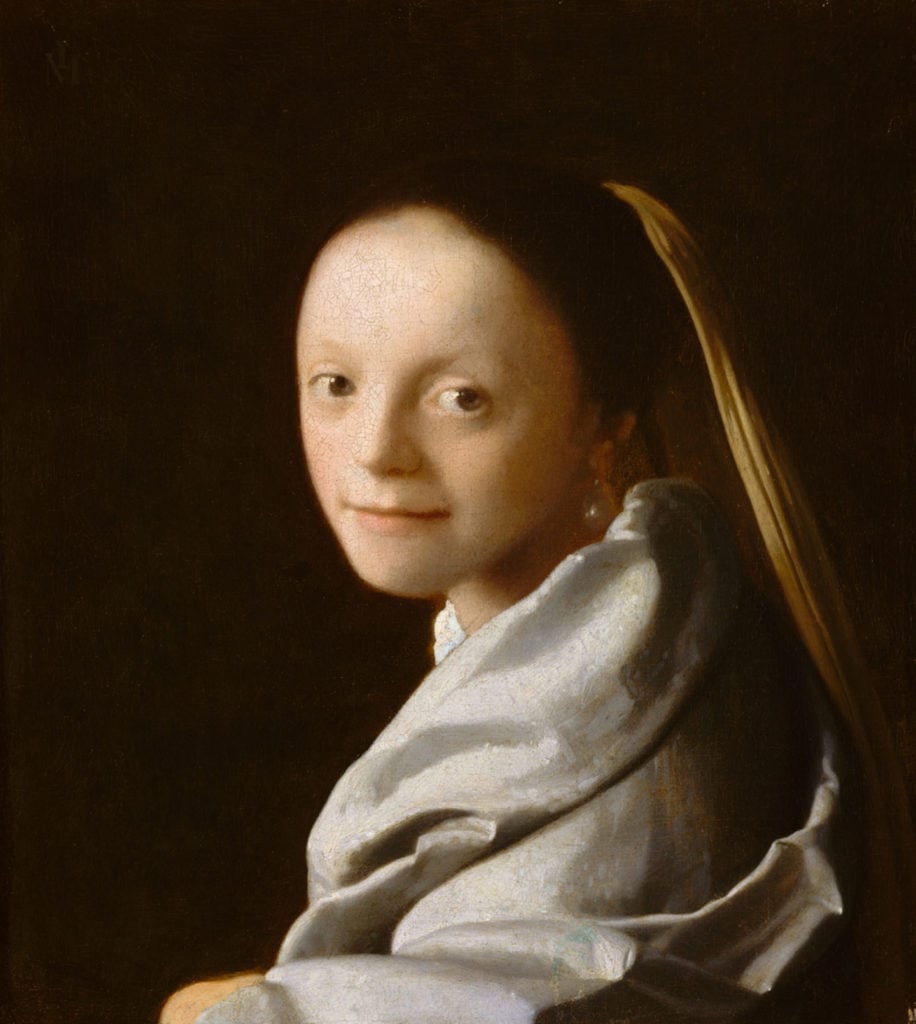
Johannes Vermeer, Study of a Young Woman, (ca. 1665–67). Courtesy of the Metropolitan Museum of Art.
The film’s villain, however, is undoubtedly Silke Gatenbröcker, the chief curator of paintings at the Herzog Anton Ulrich-Museum in Braunschweig, Germany.
After flipping several Vermeer postcards facedown, resigned to the fact they would not be coming to Amsterdam, Weber voices his determination to secure one more loan, of Braunschweig’s The Girl With the Wineglass. Paired with the similar The Wine Glass from the Gemäldegalerie in Berlin, and the Frick’s Girl Interrupted at Her Music, the painting is “pivotal” in showing Vermeer’s artistic development and recurring themes, Weber believes.
“You’re going after this one,” Roelofs said. “Yeah,” Weber replied.
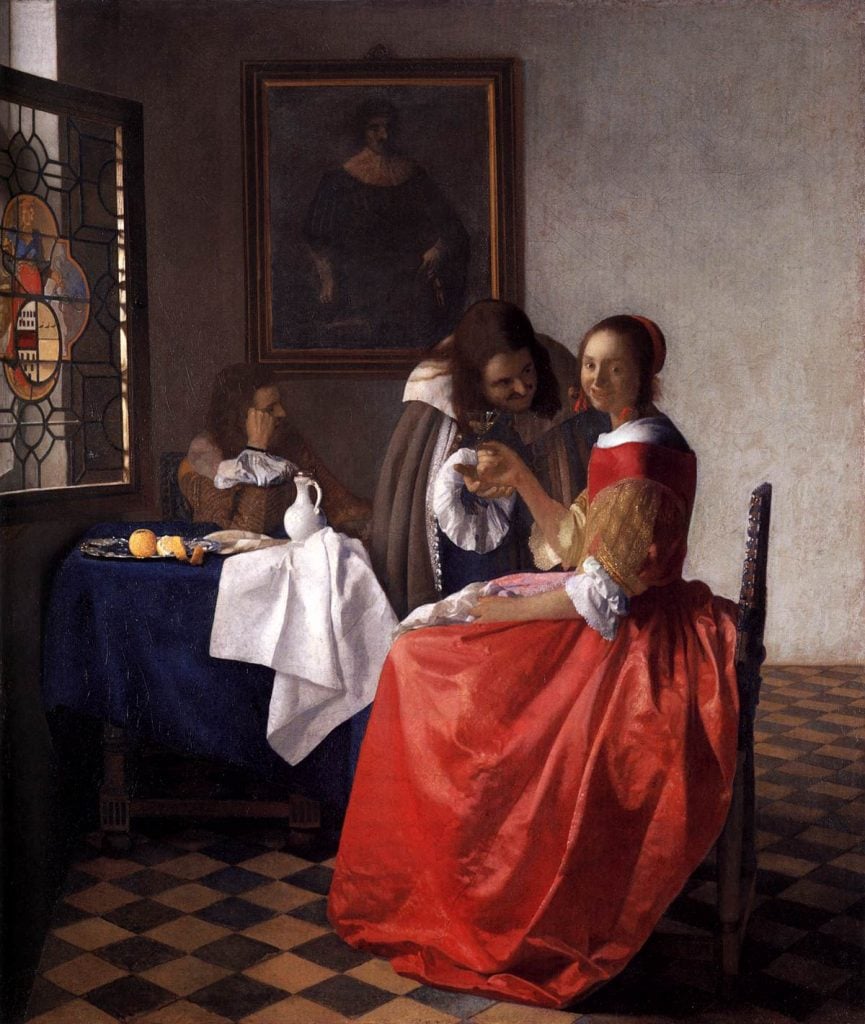
Johannes Vermeer, The Girl With the Wineglass. Collection of the Herzog Anton Ulrich-Museum in Braunschweig, Germany
Cut to the empty galleries of the Braunschweig, barely a single visitor in sight.
“A collection like this and there’s no one here,” Weber marveled.
Sadly, that does not mean the German museum will cooperate.
“This coming year we’ve got the theme for the Lower Saxony state finals. All the students sitting their final art exams have to write about this Vermeer,” Gatenbröcker told him.
Weber points out this can’t be more than 500, maybe 1,000 students. Maybe they could all take the bus to Amsterdam to see it there? (The two museums are only a four-and-a-half-hour drive apart.)

Johannes Vermeer, The Glass of Wine (ca. 1659–61). Collection of the Staatliche Museen zu Berlin – Gemäldegalerie.
“They will be bussed here,” the curator insisted.
A disappointed Weber accepts that he will have to take a last yearning look at the painting (and possibly jump off the nearest bridge).
The documentary is at its most riveting, however, when it comes to two of the paintings that did actually make the trip to Amsterdam, including Young Woman Seated at a Virginal, from the Leiden Collection.
American billionaire Thomas Kaplan purchased the work, which is the only privately owned Vermeer, from casino owner Steve Wynn with the help of dealer Otto Naumann. (The latter has one the film’s great lines: “Rich people do a great thing. They die.… it’s like a big funnel effect. [Great artworks] all wind up in museums eventually.”)
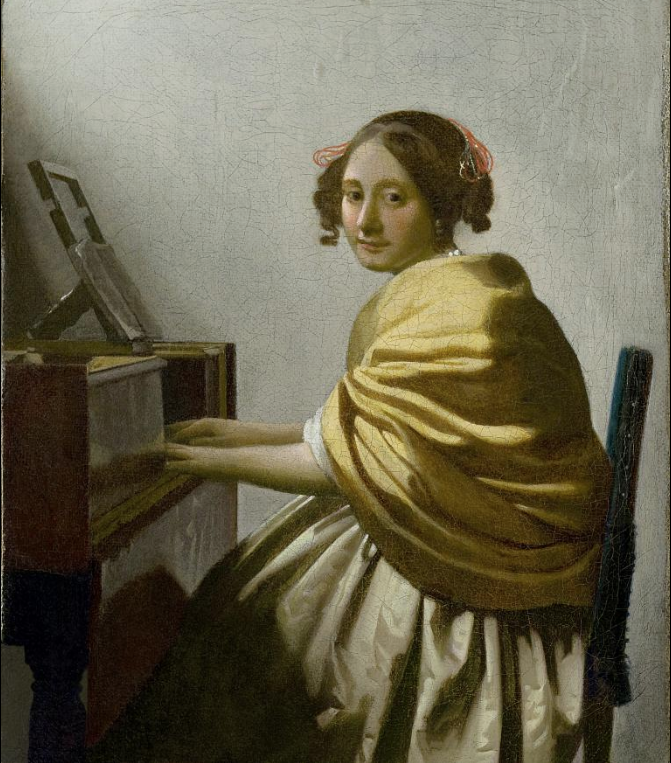
Johannes Vermeer, Young Woman Seated at a Virginal (ca. 1670–1672). Collection of the Leiden Collection, New York.
“[Steve] said ‘If you want the Rembrandt self portrait, you have to buy the Vermeer at the same time,’” Kaplan, who is known for his Rembrandt holdings, said. “I thought about that. There’s a little expression: ‘You can’t threaten me with a good time.’”
Experts have determined that Kaplan’s painting was cut from same bolt of canvas as Vermeer’s The Lacemaker, which certainly suggests that both are by the artist—although it’s possible that another artist bought the canvas. But Weber is immediately doubtful about Young Woman, especially her yellow shawl.
“I’m not supposed to be saying this, but you get the feeling someone else came in to complete this painting,” he told Jonathan Janson, a painter and an expert on the artist who runs the website Essential Vermeer.
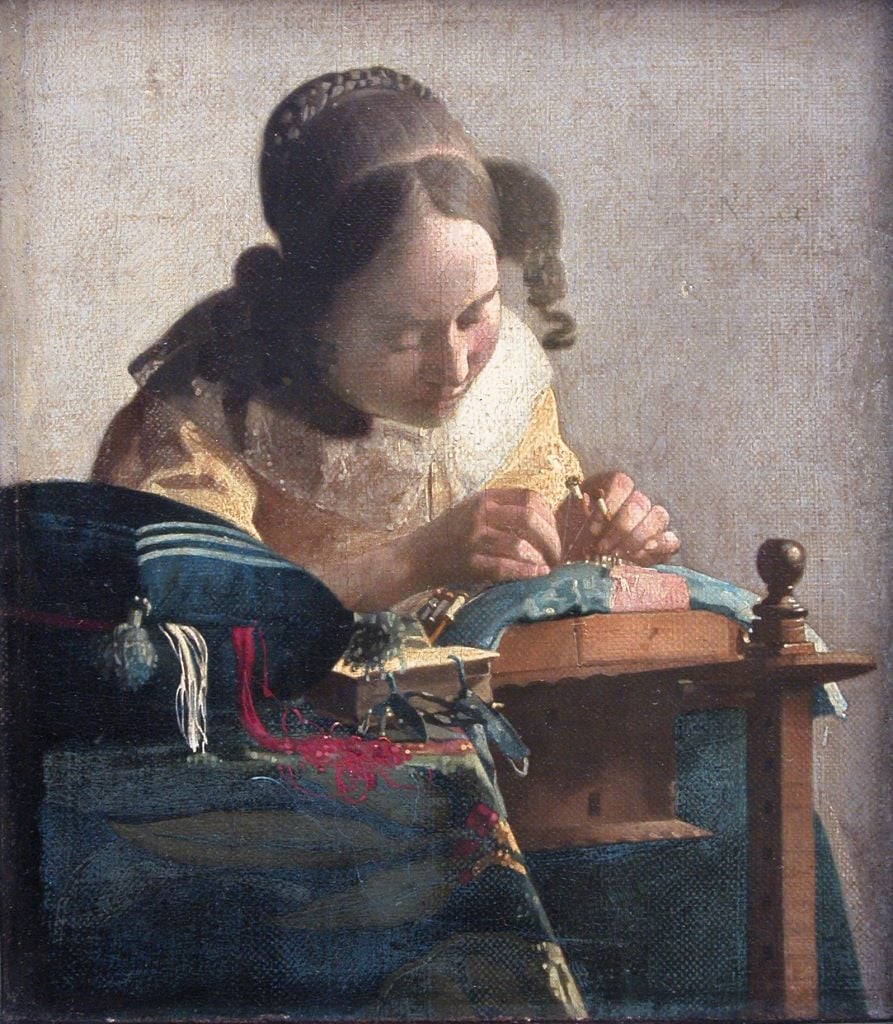
Johannes Vermeer, The Lacemaker (1666–68). Collection of the Musée du Louvre, Paris.
Janson had his own issues with the painting, namely its compositional similarity to the similarly titled Lady Seated at a Virginal, from London’s National Gallery. “Why would Vermeer have done a copy and paste?” he asked. “There’s nothing original. This is very labored. It’s not a good piece of painting.”
Weber seemed to agreed. “Do I have to write attributed to Vermeer or studio of Vermeer?” he added. “This is really a little bit of a problem.”
The very next shot features an ebullient Kaplan, who arrives at the Rijksmuseum conservation lab to see what they’ve found in its analysis of the work. He is delighted to learn that the woman’s shawl was indeed part of the original composition—proof, he feels, that this is really Vermeer.
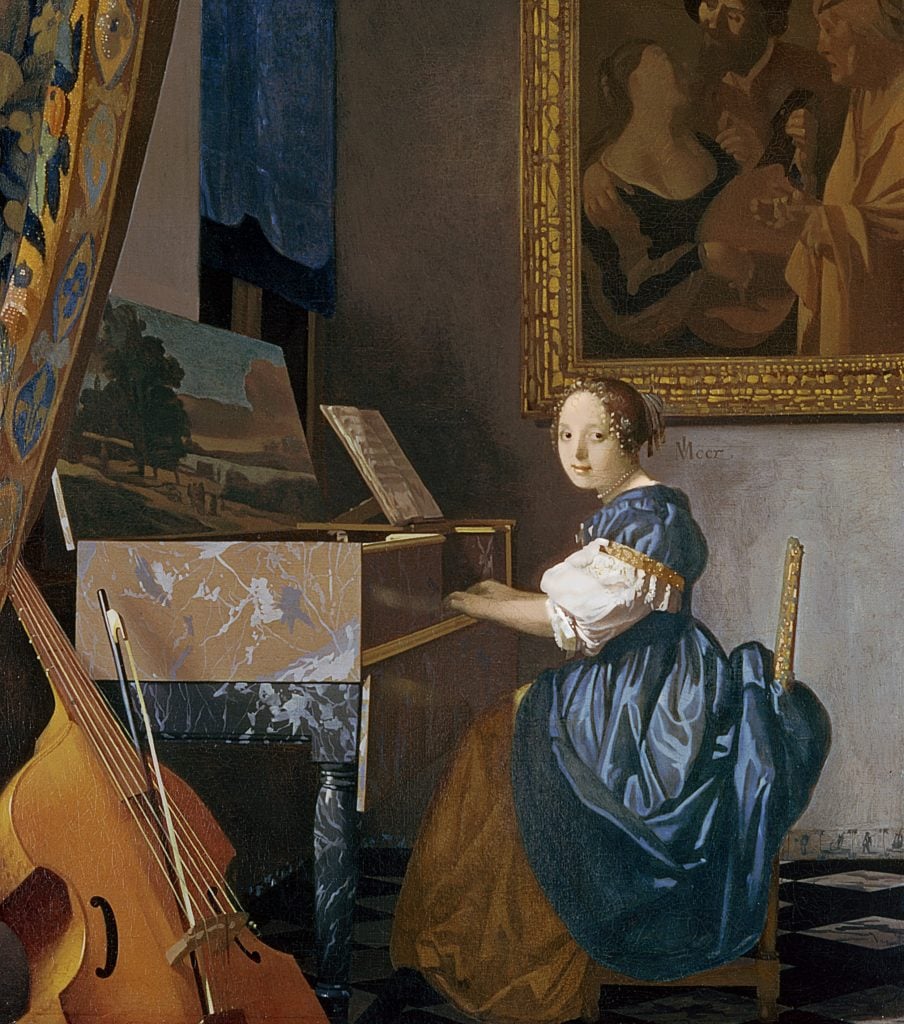
Johannes Vermeer, A Young Lady Seated at a Virginal, (c.1670). Collection of the National Gallery, London.
Kaplan is talking, but the camera zooms in on Weber standing behind him, lingering on his obvious unease. Weber does not voice his doubts, and an on-screen caption clarifies that “the Rijksmuseum fully accepts Young Woman Seated at a Virginal as an authentic Vermeer.” It’s a very funny moment.
Perhaps equally uncomfortable is the case of Girl With a Flute, from the National Gallery of Art in Washington, D.C. First, there’s the back room negotiations to ensure that the museum is willing to part with its quartet of Vermeer pictures, which Betsy Wieseman, the curator and head of Northern European paintings, calls “pilgrimage paintings” that people specifically visit the museum to see.
“Would there be a possibility of a reciprocal loan of a Vermeer at some point?” she asked. Roelofs quickly agreed that there could be.
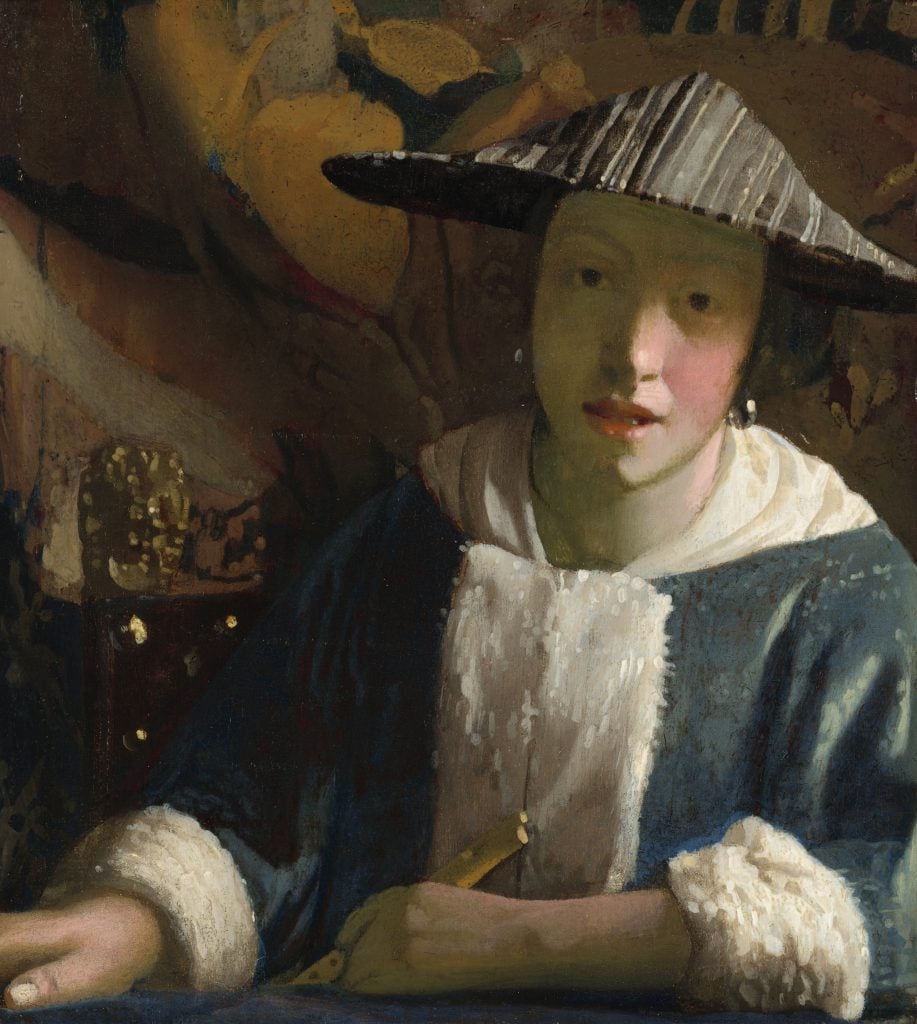
Johannes Vermeer, Girl With a Flute (c. 1669/1675). National Gallery of Art, Washington, Widener Collection.
But months later, when the National Gallery team visits the Netherlands, a new wrinkle has arisen. The Americans have examined the painting, and they don’t think it’s a Vermeer at all.
Girl With a Flute features Vermeer’s signature green earth in the flesh tones, but “look how lumpy the paint handling is. Generally, you get a sense of somebody who’s really struggling, who hasn’t quite got command of his materials,” Melanie Gifford, the gallery’s research conservator for painting technology, said. “This artist knew he should be using green earth material, but didn’t quite have the knack.”
(Janson separately points out the neck in The Guitar Player, from the collection of the Kenwood House in London, is so green that “it looks like a lizard—but there’s no doubt that it’s a Vermeer.”)
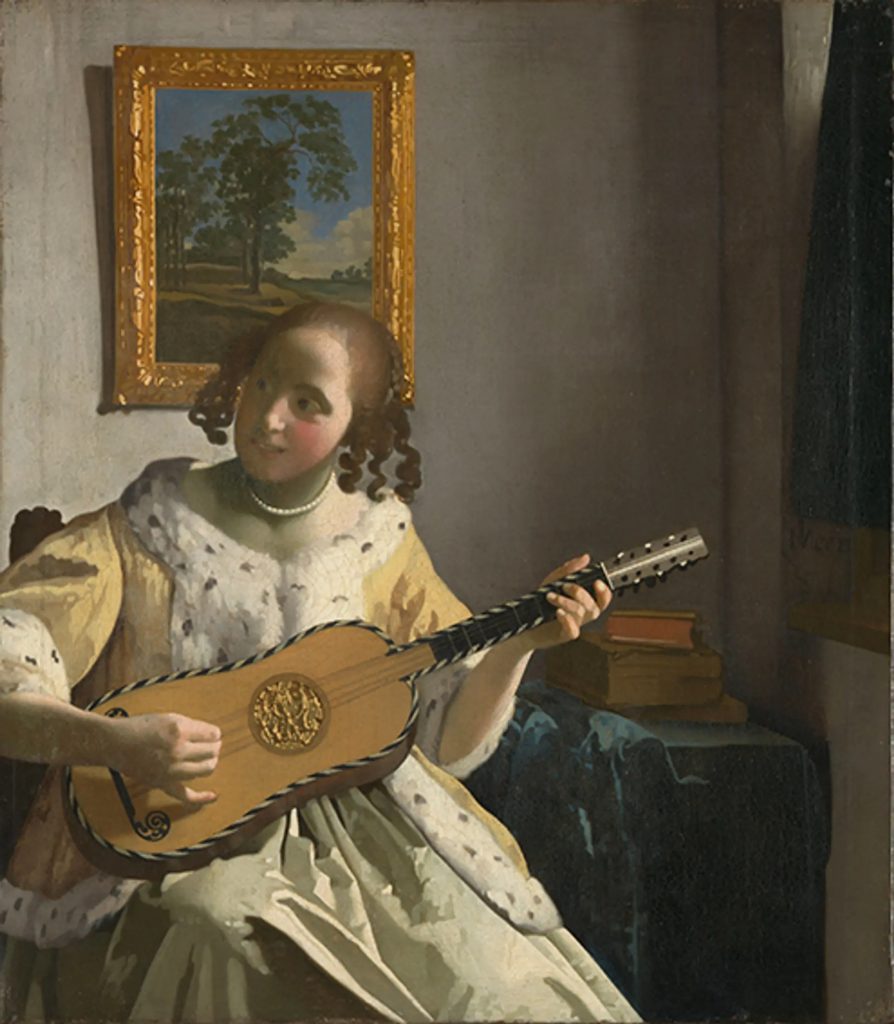
Johannes Vermeer, The Guitar Player (ca. 1672). Collection of Kenwood House, London.
The tension in the meeting is palpable, the Rijksmuseum team clearly unhappy with what they are hearing.
“We can say that Vermeer was not involved with the creation of Girl With a Flute,” Alexandra Libby, the National Gallery’s associate curator of Northern Baroque paintings, concluded. “What do you think? Do you still want the painting in your show?”
Weber definitely does. And Roelofs causes some additional drama when he goes to the papers, proclaiming that while the National Gallery is not loaning a Vermeer, it will be one by the time it arrives: “The doubts will evaporate during the flight across the ocean.”
The documentary makes several arguments in favor of the painting, noting its close relationship to Vermeer’s Girl With a Red Hat, also from the National Gallery. (That painting’s authorship has also since been questioned, with a new fringe theory that it is the work of his daughter, Maria Vermeer.)
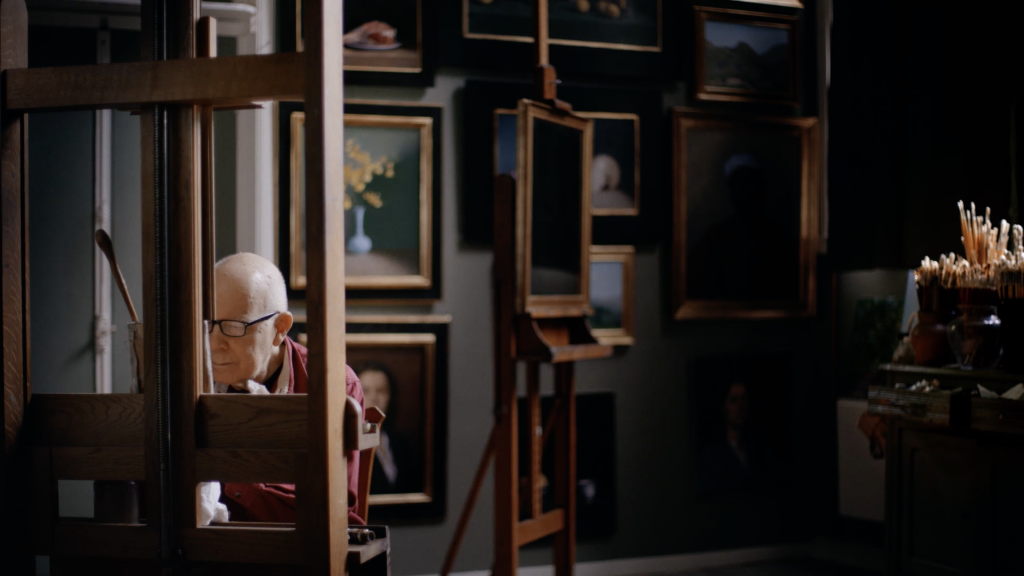
Jonathan Janson painting in a still from Close to Vermeer. Photo courtesy of Kino Lorber.
Perhaps Girl With a Flute was an early experiment by the artist with green earth, or perhaps Vermeer had an assistant who did parts of it, or perhaps it is unfinished. (The National Gallery curators shoot all these ideas down.)
The dueling opinions don’t exactly amount to an international incident, but Rijksmuseum curator Taco Dibbits does express his disappointment that Roelofs didn’t make their position clear to their colleagues at the National Gallery before speaking to press.
It’s the last real drama in the film, which ends with Weber in the fully hung galleries, a voice over the loudspeaker announcing the museum’s opening for the day—and the beginning of the exhibition he’s been so busy planning.
“Vermeer” is on view at the Rijksmuseum, Museumstraat 1, Amsterdam, February 10–June 4, 2023.
